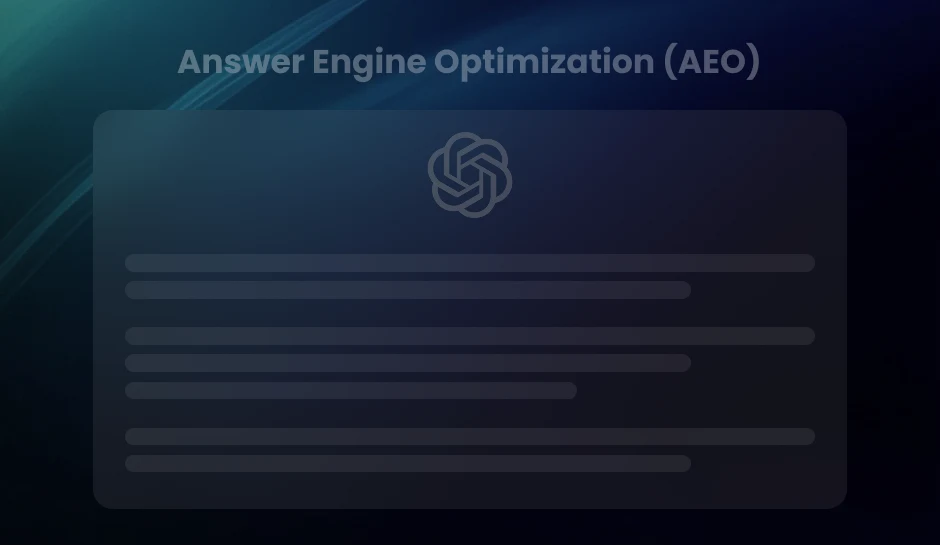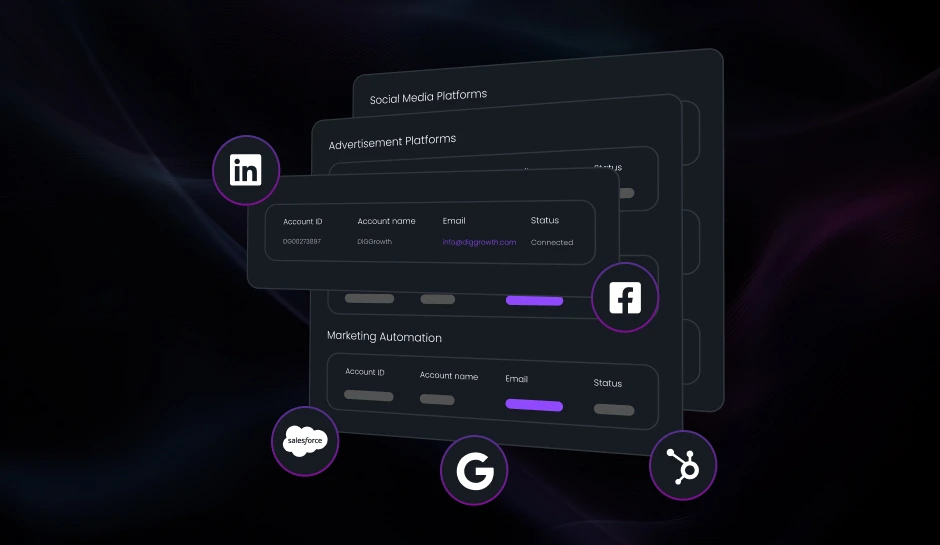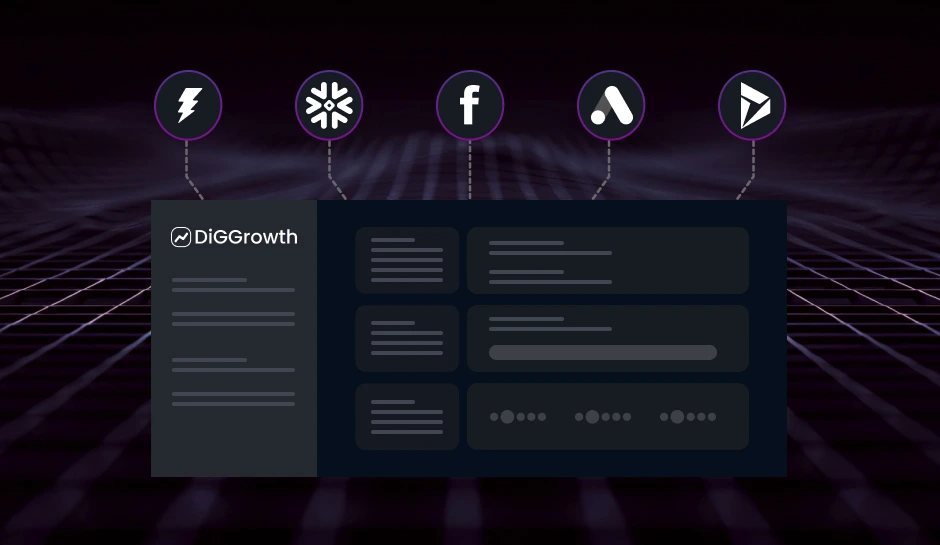
Why AI for Marketing Analytics with Adobe is the Future of Marketing
Static reports and manual data analysis are no longer enough. AI-driven marketing analytics is helping brands predict customer behavior, automate key decisions, and allocate budgets more effectively. Adobe is leading this transformation with cutting-edge AI solutions. This blog helps you learn how Adobe’s AI-driven tools help businesses personalize experiences, optimize ad spend, and drive measurable growth.
Marketers have more data than ever, yet most are still making gut-based decisions. Dashboards are packed with metrics, but when it comes to real-time action, businesses hesitate. Why? Because traditional marketing analytics tools—even those with AI features—are failing at what truly matters: turning insights into revenue-driving decisions.
Meanwhile, your competitors are not waiting. AI is already shaping consumer behavior, influencing purchase decisions, and optimizing campaigns before most brands even realize it. The biggest players in the industry are not just using AI for insights; they are using AI to outmaneuver the market.
This is not about whether AI in marketing analytics is useful. That debate is over. The real question is:
If your competitors adopted AI today, would they outperform you tomorrow?
If you do not have an answer, you are already behind.
This article is not about the features of AI-driven marketing analytics. It is about the power shift happening right now—and what you must do to stay in the game.
Why Traditional Marketing Analytics is Failing Modern Businesses
Marketing teams today have access to an unprecedented amount of data, yet decision-making has not become any easier. Instead of providing clarity, traditional analytics tools often create more complexity—overwhelming marketers with endless reports, fragmented insights, and static dashboards that struggle to keep up with dynamic market conditions.
The fundamental issue is that most analytics platforms focus on descriptive analytics—reporting on past performance. While these insights are useful, they do little to answer the most critical marketing questions:
- What will customers do next?
- Which campaigns will drive the highest ROI before they are launched?
- How can marketing spend be optimized in real-time rather than adjusted after the fact?
Static dashboards and retrospective analysis can no longer keep pace with today’s fast-moving consumer behaviors. The shift towards predictive and prescriptive analytics is now essential. Predictive analytics anticipates future customer actions based on historical patterns, while prescriptive analytics goes a step further—offering data-driven recommendations on the best course of action.
This transformation is why AI-driven marketing analytics is no longer optional. Businesses that continue relying on outdated methods will find themselves reacting to trends rather than shaping them—leading to missed opportunities, wasted budgets, and declining competitiveness.
AI is Reshaping Marketing Analytics – And Adobe is Leading the Charge
The marketing landscape is no longer driven by intuition or static performance reports. AI-powered analytics is transforming how businesses collect, interpret, and act on data—enabling brands to make faster, smarter, and more predictive decisions. Instead of relying on historical insights, AI continuously analyzes patterns, adapts in real time, and automates marketing strategies for maximum impact.
How AI is Revolutionizing Decision-Making in Marketing Analytics
Traditional analytics tools focus on what happened, but AI-driven analytics shifts the focus to what will happen and what should be done next. This shift is critical for businesses aiming to stay competitive. AI enables:
- Predictive Analytics – AI forecasts customer behavior, helping brands anticipate needs and act before competitors do.
- Real-Time Data Processing – Instead of waiting for end-of-month reports, AI provides instant insights that allow marketers to pivot their strategies immediately.
- Automated Optimization – AI-driven tools continuously test and refine campaigns, ensuring budgets are allocated to high-performing strategies.
- Advanced Customer Segmentation – AI clusters customers based on real behaviors rather than basic demographics, improving targeting precision.
Adobe’s AI Leadership: How Adobe Sensei is Transforming Marketing Analytics
Among the companies leading this transformation, Adobe is setting the benchmark with its Adobe Sensei AI technology. Integrated across Adobe Experience Cloud, Sensei AI enhances marketing analytics by:
- Understanding customer intent – AI analyzes interactions, past behaviors, and engagement signals to predict what customers are likely to do next.
- Personalization at Scale – It automates content customization, ensuring every customer receives tailored experiences without manual intervention.
- Intelligent Budget Allocation – AI dynamically adjusts marketing spend across channels, maximizing ROI.
- Automated Content Tagging & Analysis – It speeds up content management by categorizing assets and matching them to the right audience segments.
Adobe with dynamic, actionable insights that drive measurable business outcomes. Unlike traditional analytics tools that require manual interpretation, Adobe Sensei AI automates complex data analysis, making it easier for marketers to identify opportunities, predict trends, and optimize campaigns without delays.
Why Adobe is at the Center of This AI Transformation
While many AI-powered marketing tools exist, Adobe’s AI-driven analytics ecosystem stands out due to its deep integration across marketing, content, and customer experience platforms. Adobe Sensei is not just an add-on—it is embedded into Adobe Experience Cloud, ensuring that every data point is connected, analyzed, and actionable.
Here is why businesses relying on Adobe’s AI-powered analytics have a competitive edge:
- Unified Data Intelligence – Sensei AI connects insights from multiple sources (web, email, social, CRM) to create a single, AI-driven customer profile that evolves in real time.
- AI-Driven Attribution Modeling – Traditional attribution models often miscalculate the impact of different marketing touchpoints. Sensei AI uses machine learning to accurately attribute conversions, allowing businesses to invest in the most effective channels.
- Automated Insights and Recommendations – Instead of waiting for analysts to interpret reports, Sensei AI suggests real-time adjustments to campaigns, audience segments, and budget allocations.
- Cross-Channel Marketing Optimization – AI continuously refines strategies across paid media, email marketing, and web experiences, ensuring seamless customer engagement across platforms.
Adobe is not just enabling AI-powered marketing analytics—it is reshaping the way businesses compete in a data-driven world. Companies that adopt Adobe’s AI tools are no longer reacting to market trends; they are anticipating and shaping them.
As AI becomes the backbone of marketing analytics, businesses that fail to integrate AI-driven decision-making risk falling behind. Adobe is providing the tools, but the real question is: Are brands ready to act on AI-powered insights?
The High Cost of Delaying AI Adoption in Marketing Analytics
AI-driven marketing analytics has shifted from being a competitive advantage to an operational necessity. Businesses that hesitate to integrate AI into their marketing strategies risk inefficiencies, missed opportunities, and falling behind industry leaders who are already leveraging AI for real-time optimization, predictive insights, and increased ROI.
Delaying AI adoption comes at a steep cost—here is why businesses cannot afford to wait.
1. Inefficient Marketing Spend
Traditional analytics relies on historical data and manual adjustments, often leading to inefficient budget allocation. AI-driven analytics changes this by:
- Optimizing ad spend in real time, ensuring every dollar is allocated to high-performing channels.
- Enhancing audience targeting, reducing wasted impressions, and improving conversion rates.
- Eliminating guesswork, allowing businesses to focus on strategies that yield measurable results.
Without AI-powered decision-making, marketing budgets are often spent inefficiently, leading to lower ROI and missed revenue opportunities.
2. Slower Response to Market Changes
Marketing moves fast, and decisions based on outdated insights are a competitive disadvantage. Companies already using AI are able to:
- Predict customer trends before they happen and adjust their strategies accordingly.
- Respond instantly to shifting consumer behaviors through automated, AI-powered optimization.
- Experiment and iterate at scale, testing thousands of ad variations and campaign structures in real time.
Meanwhile, businesses that rely on manual analysis and retrospective data struggle to keep up, often reacting too late to market shifts.
3. Competitive Disadvantage Against AI-Enabled Businesses
Industry leaders using Adobe Sensei AI and other AI-driven marketing platforms are not just improving efficiency—they are outpacing competitors by:
- Delivering hyper-personalized customer experiences at scale.
- Deploying self-optimizing campaigns that adjust dynamically based on performance data.
- Using predictive analytics to shape future strategies, rather than reacting to past performance.
The competitive gap will only widen for businesses that delay AI adoption, making it increasingly difficult to catch up.
A Strategic Approach to AI-Driven Marketing Analytics Without Disrupting Operations
Transitioning to AI-powered marketing analytics does not have to be disruptive or overwhelming. When implemented strategically, AI enhances decision-making, efficiency, and customer engagement without requiring businesses to abandon existing systems. The key is integrating AI in phases, focusing on high-impact areas, and leveraging existing technologies to ensure a seamless transformation.
1. Augment Decision-Making Before Automating
Many businesses hesitate to adopt AI due to fears of automation replacing human control. However, the best AI implementations start by enhancing human decision-making rather than replacing it.
- AI-driven insights for smarter strategy: AI can process vast amounts of data and identify hidden patterns, helping marketers make data-backed decisions instead of relying on intuition.
- Predictive analytics for customer behavior: AI models can forecast trends, allowing businesses to anticipate market shifts and proactively adjust campaigns.
- AI-assisted recommendations: Rather than automating every process, AI can provide suggestions for ad placements, audience segmentation, and content optimization, allowing marketers to stay in control while improving efficiency.
2. Integrate AI Into Existing Marketing Platforms
Adopting AI does not require switching to entirely new software. Businesses can enhance their tools with AI-powered capabilities to drive better results without disrupting workflows.
Adobe has seamlessly integrated AI through its Sensei platform, which enhances:
- Adobe Analytics – Real-time customer journey insights and anomaly detection.
- Adobe Experience Manager – AI-powered content personalization and asset management.
- Adobe Target – AI-driven testing and automated customer experience optimization.
3. Prioritize High-Impact AI Applications
Instead of attempting an enterprise-wide AI transformation all at once, organizations should focus on specific, high-value use cases first. The most effective AI applications in marketing analytics include:
- Real-time audience segmentation – AI analyzes customer behavior patterns to create dynamic audience segments based on real interactions, not just demographics.
- Marketing spend optimization – AI identifies where marketing budgets generate the highest ROI and reallocates resources in real time to maximize efficiency.
- Automated content personalization – AI dynamically adjusts email, website, and ad content based on user preferences and behaviors, increasing engagement and conversions.
4. Strengthen Data Quality and Infrastructure
AI is only as effective as the data it processes. To fully benefit from AI-driven marketing analytics, organizations must:
- Unify customer data across all touchpoints (web, email, CRM, paid media, and offline interactions) for a single source of truth.
- Eliminate data silos by integrating AI within a centralized data platform such as Adobe’s Customer Data Platform (CDP).
- Ensure data accuracy and governance, preventing biased, incomplete, or outdated data from affecting AI models.
5. Develop an AI-First Mindset Across Teams
Even the most advanced AI-driven analytics tools will fail if marketing teams do not know how to use them effectively. Successful AI adoption requires upskilling teams and fostering a data-driven culture. Key steps include:
- Training marketers to interpret AI insights and take action. AI can surface patterns and trends, but human expertise is still required to apply these insights strategically.
- Encouraging experimentation. AI enables faster A/B testing and campaign iterations, allowing businesses to refine strategies continuously.
- Aligning AI adoption with business goals. AI should not be seen as just a technology investment—it must be directly tied to marketing and revenue objectives.
Pro Tip- AI is not a replacement for human intelligence but an enhancement. Businesses that adopt AI strategically, integrating it within existing tools, focusing on high-impact use cases, and improving data infrastructure, will see rapid improvements in marketing performance.
Key Takeaways
- Traditional marketing analytics struggles to keep up with dynamic consumer behavior, making AI-driven solutions essential for predictive and real-time decision-making.
- AI-powered analytics reshapes marketing by enabling automation, predictive modeling, and hyper-personalization, giving businesses an unprecedented competitive advantage.
- Adobe Sensei AI is at the forefront of this transformation, offering seamless AI integration across marketing, content management, and customer experience platforms.
- Delaying AI adoption in marketing analytics results in inefficient ad spend, slower responses to market shifts, and a widening competitive gap against AI-enabled businesses.
Conclusion
The future of marketing belongs to businesses that embrace AI-driven analytics to drive smarter decisions, optimize resources, and personalize customer experiences at scale. While traditional analytics tools provide insights, AI transforms data into real-time, revenue-generating actions. Adobe’s AI-powered solutions are not just advancing marketing analytics but setting the new standard for how businesses compete in a data-driven world. The question is no longer whether AI is necessary—it is whether your business is ready to leverage it before your competitors.
Do not let outdated marketing analytics hold you back.
Start leveraging AI-powered marketing analytics today. Contact us at info@diggrowth.com to explore how AI can transform your marketing strategy.
Ready to get started?
Increase your marketing ROI by 30% with custom dashboards & reports that present a clear picture of marketing effectiveness
Start Free Trial
Experience Premium Marketing Analytics At Budget-Friendly Pricing.

Learn how you can accurately measure return on marketing investment.
Additional Resources
Answer Engine Optimization (AEO): The New Frontier of SEO in 2025
As digital experiences continue to evolve, so does...
Read full post postIntegrating Data from Different Channels for a Holistic View of Your Marketing Performance
Who's your ideal customer? Where do they come...
Read full post postGet Your Channels to Play Nice: Integrated Data for Smarter Marketing
If you’re a savvy marketer, you’re living in...
Read full post postFAQ's
AI-powered marketing tools, like Adobe Sensei, comply with data privacy regulations by anonymizing customer data, using secure machine learning models, and enabling businesses to maintain transparency and control over data collection, storage, and usage.
Yes, AI-powered marketing tools are scalable. Small businesses can use AI to optimize ad spend, personalize customer interactions, and gain predictive insights without large data teams, making marketing more efficient and cost-effective.
AI uses machine learning algorithms to detect anomalies, fill gaps with predictive modeling, and clean data to improve accuracy. However, businesses must ensure data integrity by integrating AI with a well-structured data management strategy.
E-commerce, finance, healthcare, and retail gain significant advantages from AI-powered marketing analytics. AI helps predict customer behavior, optimize campaigns, and personalize experiences, making it a game-changer for any industry relying on customer engagement and data-driven decision-making.
Businesses can track AI’s impact through improved customer engagement, higher conversion rates, reduced acquisition costs, and increased revenue. AI-driven analytics platforms provide real-time performance metrics, making it easier to measure ROI against traditional marketing approaches.
 Shagun Sharma
Shagun Sharma  Rahul Sachdeva
Rahul Sachdeva 

